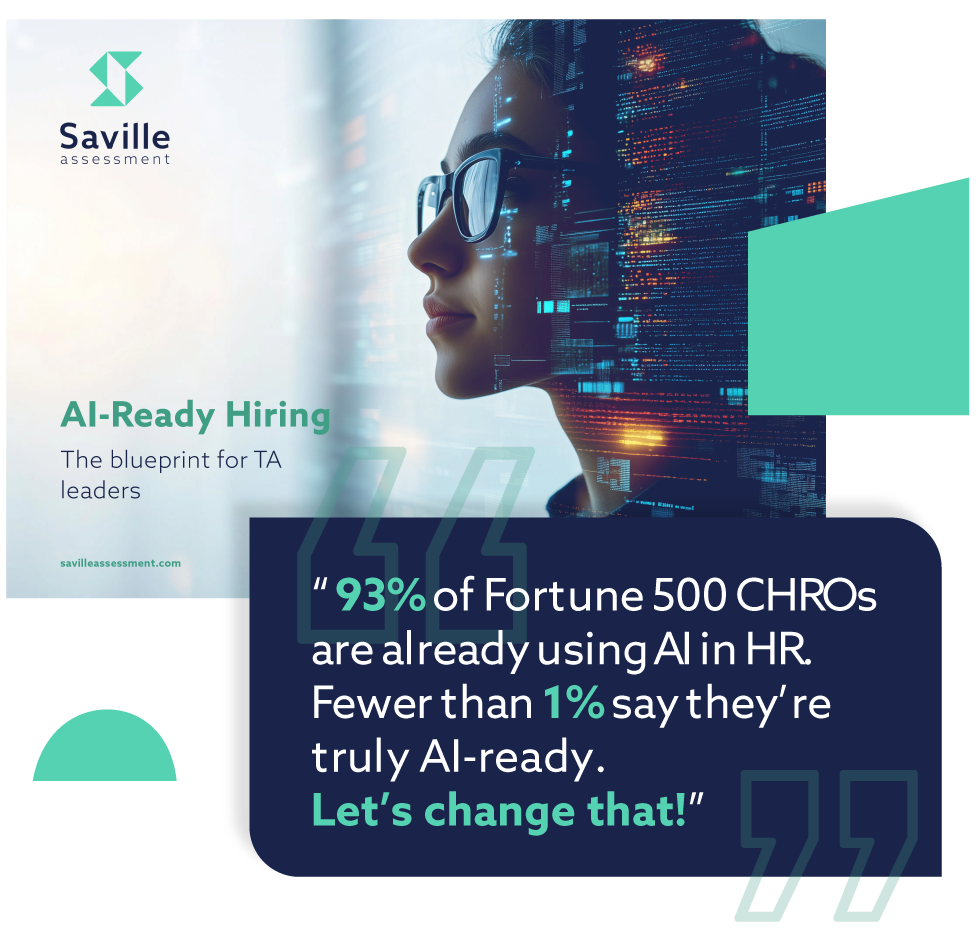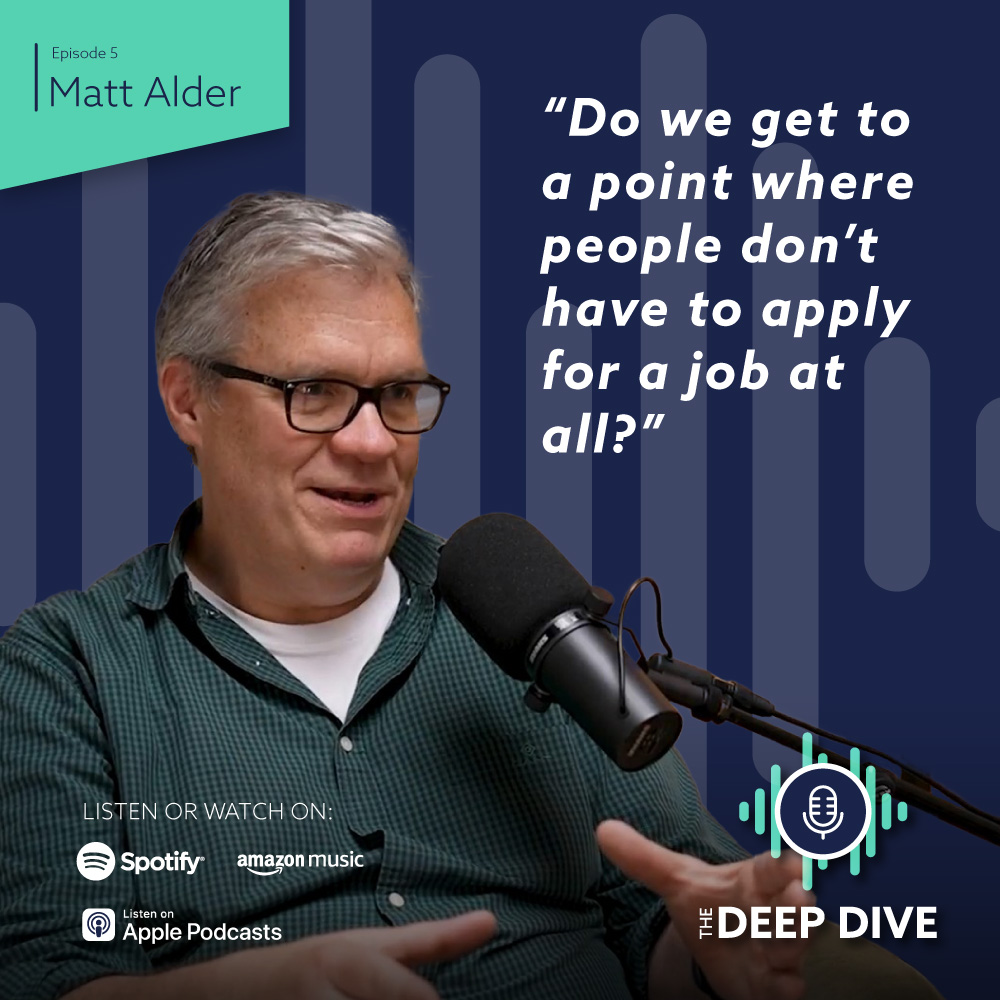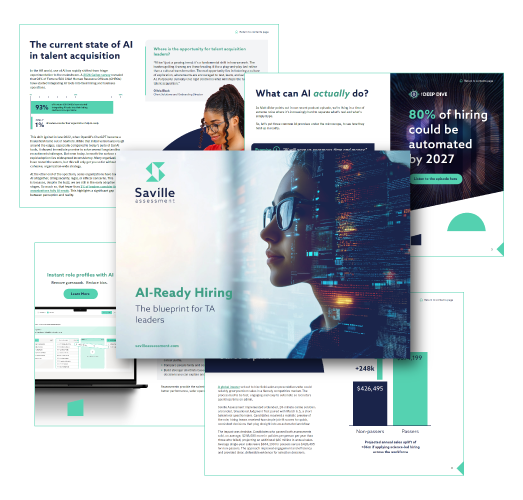Fewer than 1% of leaders say their organization is fully AI-ready1 but closing that gap starts now.

The shape of hiring is changing quickly, and as Matt Alder put it on The Deep Dive podcast2:
“If you have more than 10–15 years left in your career, this absolutely affects you.”
AI has moved from hype to habit. Around 90% of organizations already use it somewhere in hiring. But adoption isn’t readiness. To get the upside without the headlines, you need a map (where AI fits), guardrails (how it’s governed) as well as explainable outputs and audit-ready evidence that it’s working.
By 2027, we might expect AI to manage tasks such as:
The recruiter’s role isn’t becoming obsolete, but it *is* evolving.


AI can cut through recruiter workload, time-to-hire and boost diversity, but only if you know how to apply them. This report gives you the playbook.

As automation expands, the most valuable recruiter skills tilt towards:
Leading teams are shifting from credentials to evidence-led signals that predict performance and retention, with AI accelerating the heavy lifting; finding, scoring and surfacing those signals faster, while decisions stay with people.
In practice, that means defining clear, role-specific success profiles that spell out the skills, behaviors and motivators that matter. Start by using structured assessment aligned to those profiles; applying consistent scoring to produce shortlists that are auditable and explainable; and closing the loop with measurement that tracks quality, speed, cost and fairness.
Some candidates remain cautious about AI in hiring, which is why transparency matters. Practical guardrails help you move quickly and safely:
Choose systems that provide interpretable reasons (e.g., “below threshold on X competency”) and keep a human in the loop.
Measure outcomes by stage; investigate disparities and tune processes.
Collect only what you need; handle candidate data responsibly.
Be explicit about how AI may/may not be used; train teams on the why and the how.
Create a small pilot and define a clear success metric (e.g., recruiter hours saved).

Refresh or create a simple success profile for one role so your automation points at what matters.

Decide upfront where human review is mandatory.

Track speed, quality, fairness, and cost. Expand only when the benefits are clear and risks are controlled.

Ask yourself these questions and then dive deeper at the link below with our full checklist and scorecard, providing a clearer picture of whether your organization is leading the way or getting left behind…